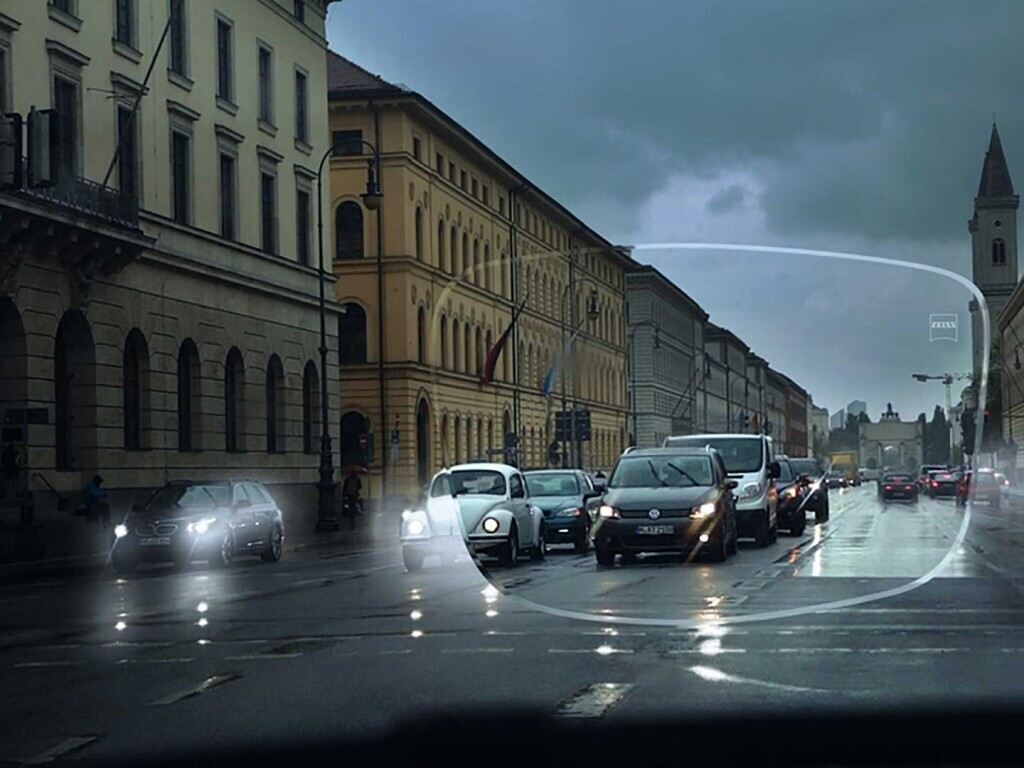There is only one thing worse than driving and that is driving in the rain. We’ve all been there; a few water droplets fall from the sky and suddenly everyone forgets how to drive. Then, the windshield becomes smudged with rain, visibility is lowered, and is it just me, or does everyone forget they have a turn signal? However, there is one thing you can do to ease your driving-in-the-rain pain – wear sunglasses.
This Internet-circulated piece of advice has been around since 2006. Snopes, the online expert in urban legends, has collected and archived several chain emails claiming that donning sunglasses (any model, they say) will make the storm magically vanish. Sunglasses can enable drivers to see as if the rain isn’t even there, will reduce the glare from passing cars, and will work in both daylight and low-light nighttime conditions. Putting on sunglasses when it’s raining at night, in other words, will return a driver’s visibility to normal levels, according to the myths. And if these claims aren’t true, then there are potentially a whole lot of drivers on the road who are unintentionally making their vision a whole lot worse. Luckily, it is not completely false, you just have to pay attention to what type of sunglasses and when to wear them.

Contents
Why Is It Better To Wear Sunglasses While It Is Raining?
First and foremost, totally disregard the suggestion to put on sunglasses at night. It’s already too dark to make it any darker, and contrary to the claims, sunglasses won’t have enough of a positive effect on the rainfall to offset the fact that they’re making the overall visibility much worse. However, wearing sunglasses during daytime rainstorms is OK (as long as the sky isn’t very dark), and sunglasses may also help increase contrast in mild to moderate fog.
It must be noted that, contrary to the urban legend’s claim, not all sunglasses will work to increase visibility in the rain. Optometrists say that only sunglasses with polarized lenses will offer any benefit because they work in a very specific way. Polarized lenses help prevent light from scattering when it bounces off a reflective surface, like the glare you see when rain bounces off the road or falls in front of another car’s lights. Sunglasses with polarized lenses reduce that effect, making it easier to see what’s going on without being distracted or blinded by the unpredictable light glare. Fog and light can have a similar effect on the field of vision. As long as these recommendations are followed, wearing sunglasses in the rain can actually be helpful.
SEE MORE:
- 5 Completely Wrong Ways to Drive in the Rain
- Fed Up With Rain And Snow? Make Homemade Water Repellent!
What Type Of Sunglasses And Lens Should Be Used?
But keep in mind that not all polarised sunglasses are equal, and not all glasses are polarised. If you want to buy a pair of polarised glasses, you’ll need to make sure they are indeed polarised, and this special coating on the lens adds to the cost of glasses. For no-name brand sunnies, it’s not much more because the coating might not be of high quality, and for some well-known brands, they can cost a lot more polarised because either the coating is of a high-quality standard and/or you’re paying for the brand name.
In any event, for driving, you want a pair of glasses designed for sports use or even specific driving glasses. These will usually provide added protection on the side without hindering peripheral vision. The ideal driving tint for medium to low sunlight is going to be a Category 2 lens or lighter. A Category 2 lens includes VLTs that range from 18-45%, meaning that the lenses allow 18-45% of visible light to pass through the lenses. Lenses in this category are perfect for the rain since they allow more light in and are suitable for conditions below bright sunlight.
How Do You Know If Your Lenses Are Polarized Or Not?

Not sure if your sunglasses are polarized? Here are two different tests to try at home:
1. Computer Test
All you will need for this one is a backlit LCD computer. Look at the computer screen through your lenses, then, start to rotate your glasses. If your lenses are polarized, it will start to get darker as you turn it until it blacks out. The reason why this test work is because LCD screens also use polarized technology.
2. Pop-Out Your Lenses
The first thing you should do is find a sheet of white paper. With both of your lenses already popped out of your frames, hold one lens on top of the white paper as if you were looking through it. Hold the other lens on top of the first facing the same direction and slowly start turning it until the second lens is vertical to the first one. If it is polarized, you should see the overlap area of the two lenses progressively getting darker until it completely blacks out. This is because the bottom lens blocks out horizontal light waves and the top lens blocks out vertical light waves. The bottom and the top lenses cancel each other out which means no light can pass through.
Conclusion
Sunglasses can help you while driving in the rain! However, there are some considerations you need to take. First, always grab a pair of polarized sunglasses. Polarized lenses are going to be the only ones that help cut through the glare caused by reflections off of the water. Second, make sure the tint level of your sunglasses isn’t too dark for the weather conditions. The recommended lens colors that are suitable for general or lower light conditions are grey gradient polarized, brown gradient polarized, or yellow polarized. If you are not sure if your lenses are polarized, there are tests you can perform at home to double-check.
All in all – be smart! Even with the right sunglasses, if rain or fog is too heavy or dense, it can be very dangerous to drive in. Always use your best judgment in these situations. And visit Driving Tips to see more interesting tips like this!



